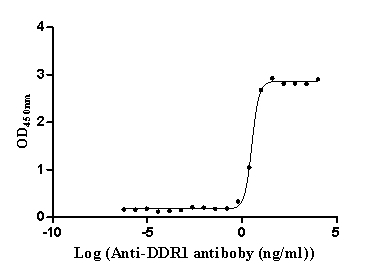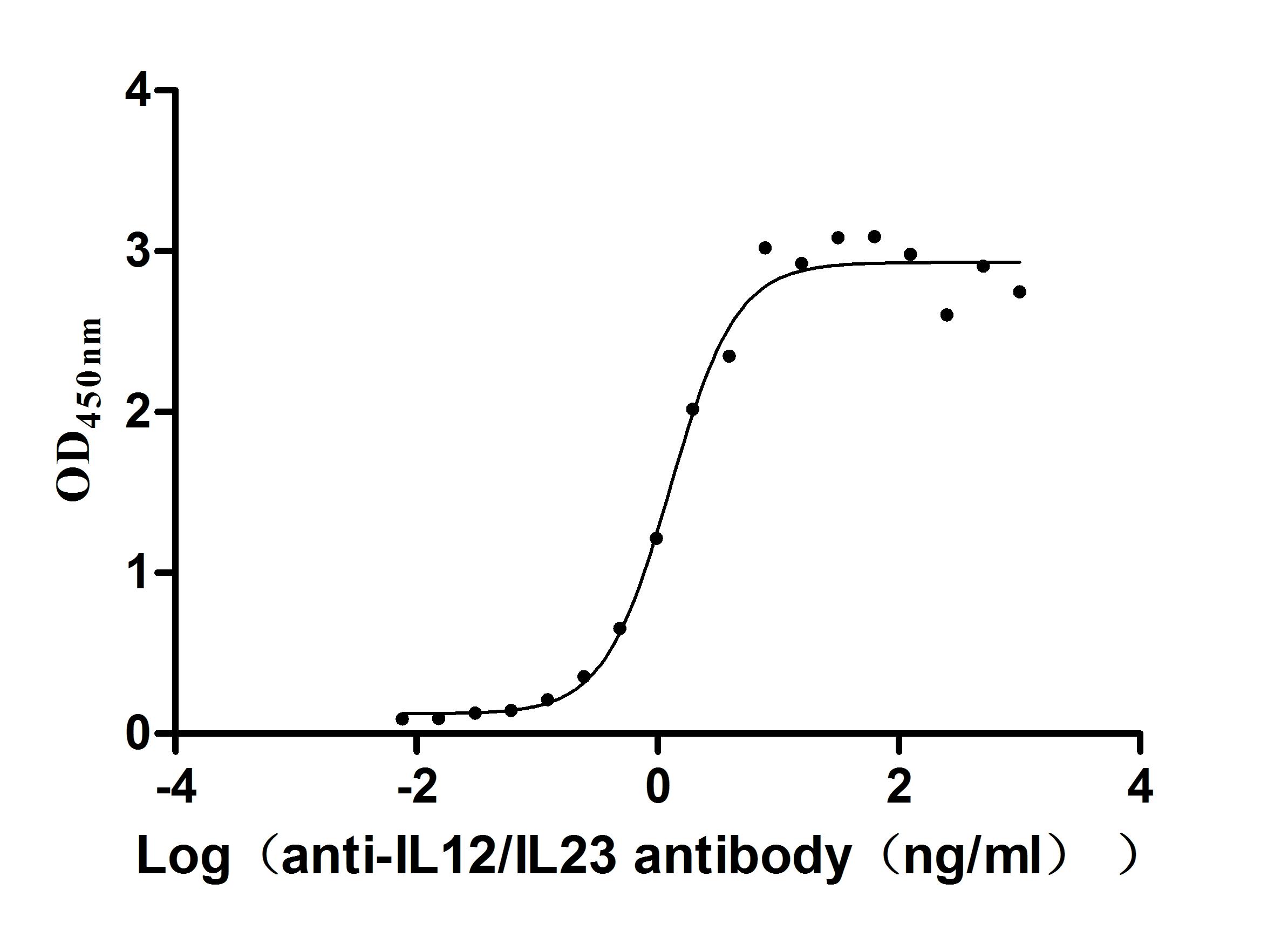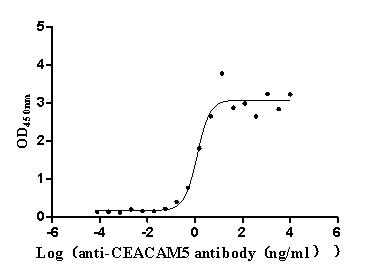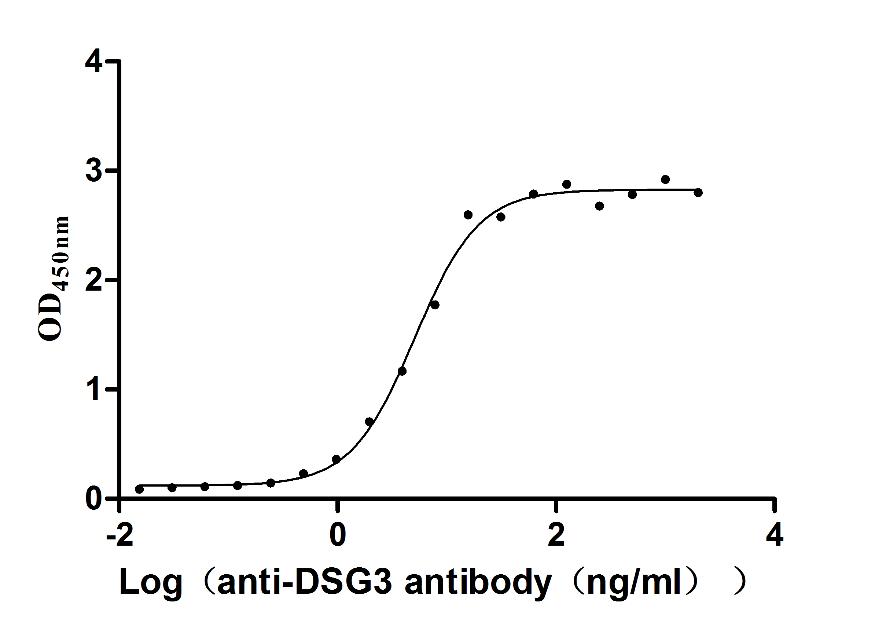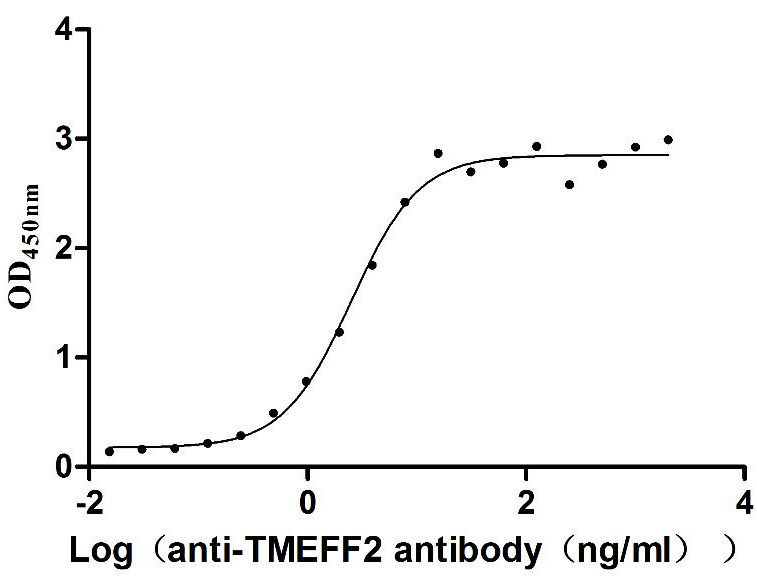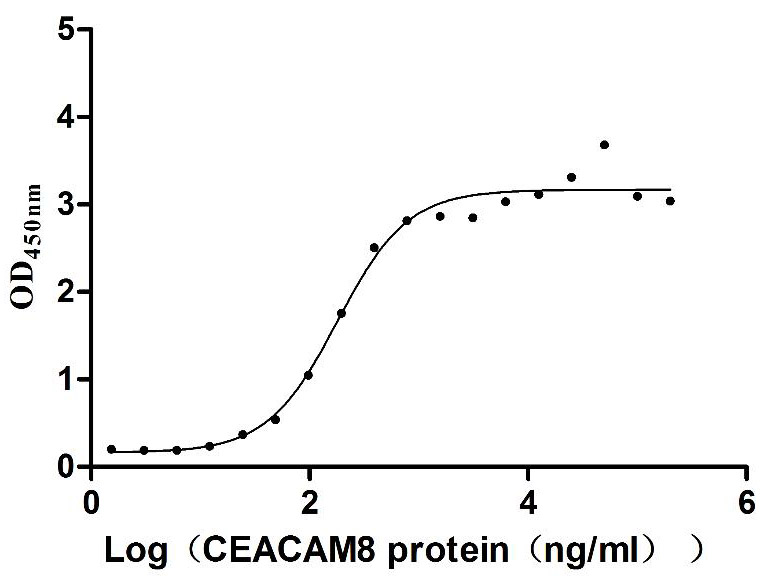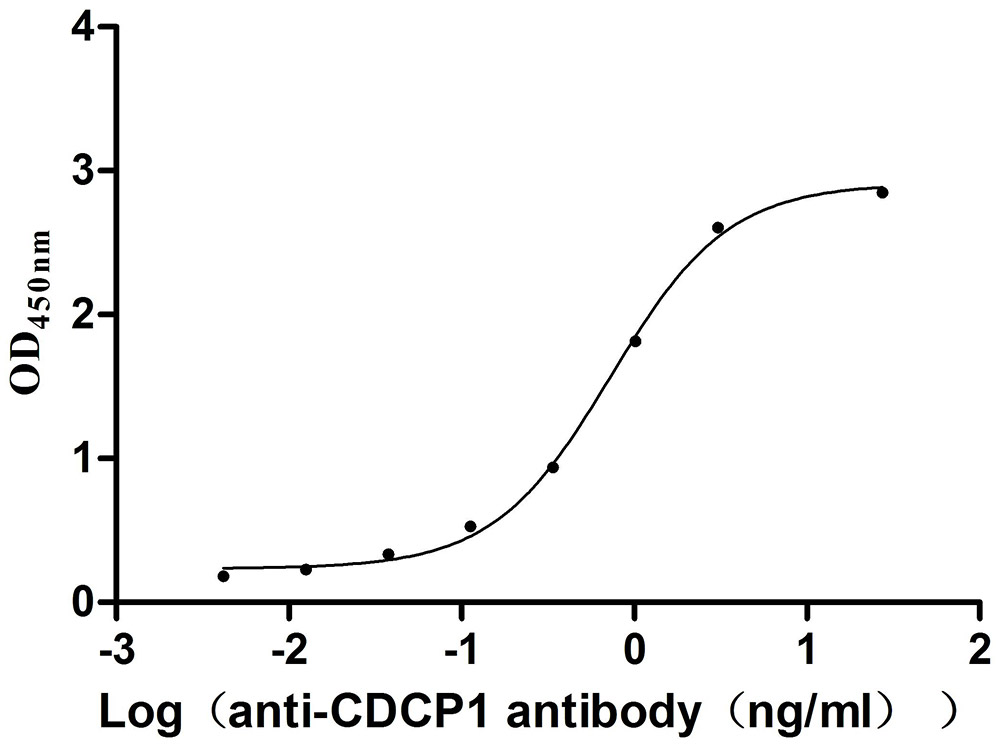Recombinant Human Azurocidin (AZU1)
-
中文名稱:
-
貨號:CSB-YP002485HU
-
規格:
-
來源:Yeast
-
其他:
-
中文名稱:
-
貨號:CSB-EP002485HU
-
規格:
-
來源:E.coli
-
其他:
-
中文名稱:
-
貨號:CSB-EP002485HU-B
-
規格:
-
來源:E.coli
-
共軛:Avi-tag Biotinylated
E. coli biotin ligase (BirA) is highly specific in covalently attaching biotin to the 15 amino acid AviTag peptide. This recombinant protein was biotinylated in vivo by AviTag-BirA technology, which method is BriA catalyzes amide linkage between the biotin and the specific lysine of the AviTag.
-
其他:
-
中文名稱:
-
貨號:CSB-BP002485HU
-
規格:
-
來源:Baculovirus
-
其他:
-
中文名稱:
-
貨號:CSB-MP002485HU
-
規格:
-
來源:Mammalian cell
-
其他:
產品詳情
-
純度:>85% (SDS-PAGE)
-
基因名:CAP7
-
Uniprot No.:
-
別名:Azurocidin; Cationic antimicrobial protein CAP37; Heparin-binding protein; HBP; hHBP; AZU1
-
種屬:Homo sapiens (Human)
-
蛋白標簽:Tag?type?will?be?determined?during?the?manufacturing?process.
The tag type will be determined during production process. If you have specified tag type, please tell us and we will develop the specified tag preferentially. -
產品提供形式:Liquid or Lyophilized powder
Note: We will preferentially ship the format that we have in stock, however, if you have any special requirement for the format, please remark your requirement when placing the order, we will prepare according to your demand. -
復溶:We recommend that this vial be briefly centrifuged prior to opening to bring the contents to the bottom. Please reconstitute protein in deionized sterile water to a concentration of 0.1-1.0 mg/mL.We recommend to add 5-50% of glycerol (final concentration) and aliquot for long-term storage at -20℃/-80℃. Our default final concentration of glycerol is 50%. Customers could use it as reference.
-
儲存條件:Store at -20°C/-80°C upon receipt, aliquoting is necessary for mutiple use. Avoid repeated freeze-thaw cycles.
-
保質期:The shelf life is related to many factors, storage state, buffer ingredients, storage temperature and the stability of the protein itself.
Generally, the shelf life of liquid form is 6 months at -20°C/-80°C. The shelf life of lyophilized form is 12 months at -20°C/-80°C. -
貨期:Delivery time may differ from different purchasing way or location, please kindly consult your local distributors for specific delivery time.Note: All of our proteins are default shipped with normal blue ice packs, if you request to ship with dry ice, please communicate with us in advance and extra fees will be charged.
-
注意事項:Repeated freezing and thawing is not recommended. Store working aliquots at 4°C for up to one week.
-
Datasheet :Please contact us to get it.
相關產品
靶點詳情
-
功能:This is a neutrophil granule-derived antibacterial and monocyte- and fibroblast-specific chemotactic glycoprotein. Binds heparin. The cytotoxic action is limited to many species of Gram-negative bacteria; this specificity may be explained by a strong affinity of the very basic N-terminal half for the negatively charged lipopolysaccharides that are unique to the Gram-negative bacterial outer envelope. It may play a role in mediating recruitment of monocytes in the second wave of inflammation. Has antibacterial activity against the Gram-negative bacterium P.aeruginosa, this activity is inhibited by LPS from P.aeruginosa. Acting alone, it does not have antimicrobial activity against the Gram-negative bacteria A.actinomycetemcomitans ATCC 29532, A.actinomycetemcomitans NCTC 9709, A.actinomycetemcomitans FDC-Y4, H.aphrophilus ATCC 13252, E.corrodens ATCC 23834, C.sputigena ATCC 33123, Capnocytophaga sp ATCC 33124, Capnocytophaga sp ATCC 27872 or E.coli ML-35. Has antibacterial activity against C.sputigena ATCC 33123 when acting synergistically with either elastase or cathepsin G.
-
基因功能參考文獻:
- Neuronal CAP37 may modulate the neuroinflammatory response in Alzheimer disease. PMID: 26170148
- Plasma levels of heparin-binding protein were significantly higher in patients with acute respiratory distress syndrome. PMID: 23883488
- identified a multifunctional bioactive peptide, based on CAP37, that induces cell migration, possesses antibacterial and LPS-binding activity, and is effective at healing infected and noninfected corneal wounds in vivo. PMID: 25412625
- Azurocidin 1 displays antimicrobial activity against E. coli, S. faecalis, and C. albicans. PMID: 11994286
- Low levels of azurocidin in maternal serum in the first trimester were associated with subsequent preterm prelabor rupture of membranes. PMID: 23808364
- AZU1 exhibited high affinity binding to PTX3 in a calcium ion-dependent manner PMID: 22278372
- Heparin-binding protein is elevated in patients with shock from septic and non-septic etiologies. PMID: 22207392
- The TAASC motif in a cyclizised 20-44 amino acid peptide is part of the ligand in HBP responsible for activation of the HBP receptor on monocytes. Monocytes release HBP constitutively in small amounts and more so in the presence of lipopolysaccharide. PMID: 20083497
- Proliferating bile ductules may play a role in the inflammatory response in biliary atresia through expression of CAP37. PMID: 20399025
- group A streptococci induce contact activation and HBP release during skin infection, which likely contribute to the symptoms seen in erysipelas: fever, pain, erythema, and edema PMID: 20107486
- Secretion of heparin-binding protein (CAP37) from human neutrophils is determined by its localization in azurophilic granules and secretory vesicles PMID: 11861296
- CAP37 is localized within the vascular endothelium associated with atherosclerotic plaques. CAP37 is induced in endothelial cells in response to inflammatory mediators PMID: 11891183
- structural analysis of N-glycans PMID: 12054586
- A comparison of proforms and mature forms of azurocidin in regulating granulopoiesis PMID: 12135665
- arginine-rich residues of CAP37 amplify lipopolysaccharide-induced monocyte activation PMID: 12438368
- CAP37 is a neutrophil-derived inflammatory mediator that augments leukocyte adhesion to endothelial monolayers PMID: 12826073
- Azurocidin 1 (cationic antimicrobial protein 37)is a multifunctional inflammatory mediator causing an increase of vascular permeability [review]. PMID: 14515154
- Due to its localization to atherosclerotic plaques and its ability to modulate smooth muscle cells, CAP37 may play a role in the progression of this disease. PMID: 15020208
- Secretion of CAP37, a neutrophil granule protein accumulating on the endothelial cell surface and promoting arrest of monocytes, could contribute to the recruitment of monocytes at inflammatory loci. PMID: 15879141
- HBP appears to be one of the primary effector molecules of antibody-mediated nonhemolytic transfusion reactions including transfusion acute lung injury PMID: 18346022
- HBP and human neutrophil peptides 1-3 triggered macrophage release of TNF-alpha and IFN-gamma, which acted in an autocrine loop to enhance expression of CD32 and CD64 and thereby enhance phagocytosis[heparin-binding protein, HBP] PMID: 18787642
- Data show that human neutrophils challenged with leukotriene B(4) release heparin-binding protein as determined by Western blot analysis. PMID: 19151333
顯示更多
收起更多
-
亞細胞定位:Cytoplasmic granule membrane; Peripheral membrane protein; Cytoplasmic side.
-
蛋白家族:Peptidase S1 family, Elastase subfamily
-
數據庫鏈接:
Most popular with customers
-
Recombinant Human Epithelial discoidin domain-containing receptor 1 (DDR1), partial (Active)
Express system: Mammalian cell
Species: Homo sapiens (Human)
-
Recombinant Human IL12B&IL12A Heterodimer Protein (Active)
Express system: Mammalian cell
Species: Homo sapiens (Human)
-
Express system: Mammalian cell
Species: Homo sapiens (Human)
-
Recombinant Human Desmoglein-3 (DSG3), partial (Active)
Express system: Baculovirus
Species: Homo sapiens (Human)
-
Recombinant Human Tomoregulin-2 (TMEFF2), partial (Active)
Express system: Mammalian cell
Species: Homo sapiens (Human)
-
Recombinant Human Carcinoembryonic antigen-related cell adhesion molecule 6 (CEACAM6) (Active)
Express system: Mammalian cell
Species: Homo sapiens (Human)
-
Recombinant Human Early activation antigen CD69 (CD69), partial (Active)
Express system: Mammalian cell
Species: Homo sapiens (Human)
-
Recombinant Mouse CUB domain-containing protein 1 (Cdcp1), partial (Active)
Express system: Mammalian cell
Species: Mus musculus (Mouse)


